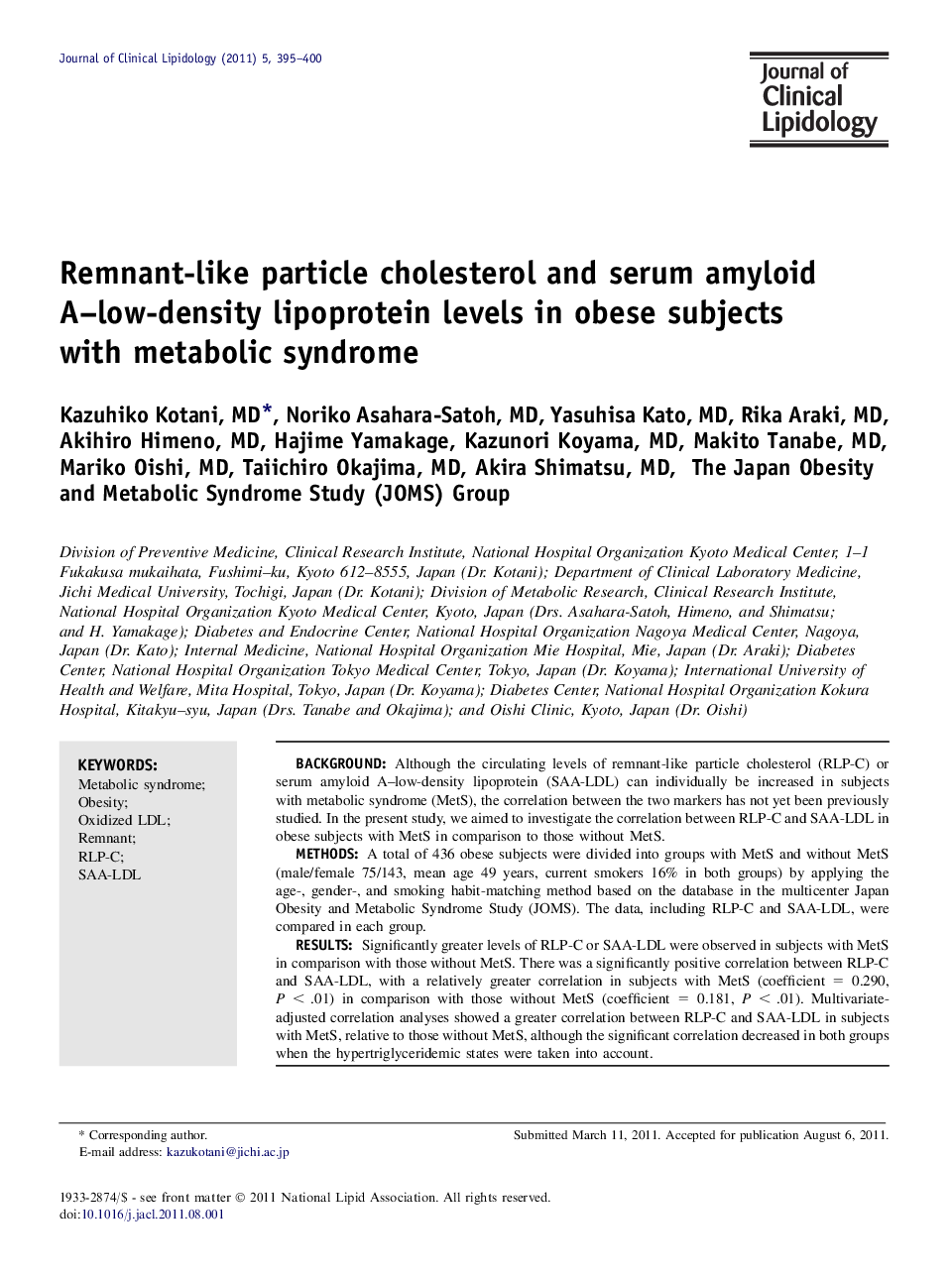| Article ID | Journal | Published Year | Pages | File Type |
|---|---|---|---|---|
| 2966347 | Journal of Clinical Lipidology | 2011 | 6 Pages |
BackgroundAlthough the circulating levels of remnant-like particle cholesterol (RLP-C) or serum amyloid A–low-density lipoprotein (SAA-LDL) can individually be increased in subjects with metabolic syndrome (MetS), the correlation between the two markers has not yet been previously studied. In the present study, we aimed to investigate the correlation between RLP-C and SAA-LDL in obese subjects with MetS in comparison to those without MetS.MethodsA total of 436 obese subjects were divided into groups with MetS and without MetS (male/female 75/143, mean age 49 years, current smokers 16% in both groups) by applying the age-, gender-, and smoking habit-matching method based on the database in the multicenter Japan Obesity and Metabolic Syndrome Study (JOMS). The data, including RLP-C and SAA-LDL, were compared in each group.ResultsSignificantly greater levels of RLP-C or SAA-LDL were observed in subjects with MetS in comparison with those without MetS. There was a significantly positive correlation between RLP-C and SAA-LDL, with a relatively greater correlation in subjects with MetS (coefficient = 0.290, P < .01) in comparison with those without MetS (coefficient = 0.181, P < .01). Multivariate-adjusted correlation analyses showed a greater correlation between RLP-C and SAA-LDL in subjects with MetS, relative to those without MetS, although the significant correlation decreased in both groups when the hypertriglyceridemic states were taken into account.ConclusionsA relatively greater and positive correlation between greater levels of RLP-C and SAA-LDL in obese subjects with MetS, in comparison with those without MetS, may be linked to the development of MetS-related cardiovascular disease.
